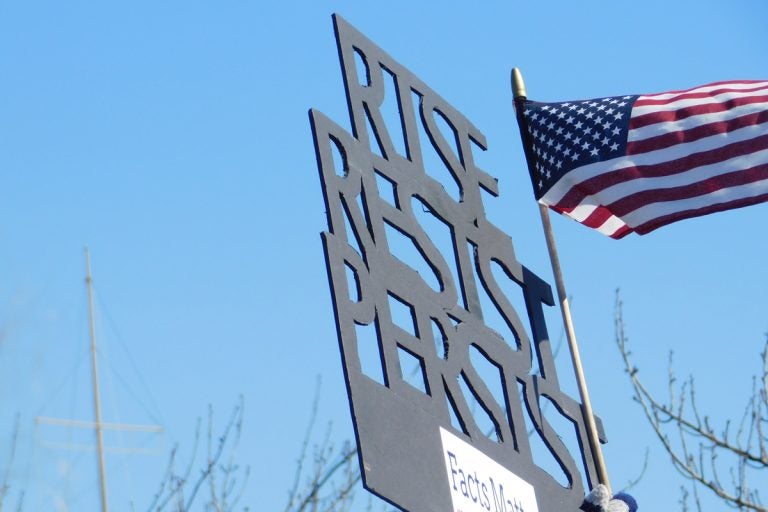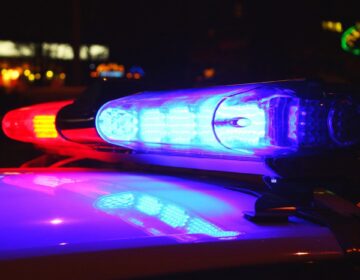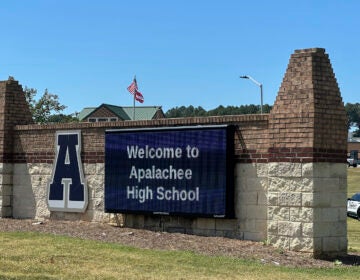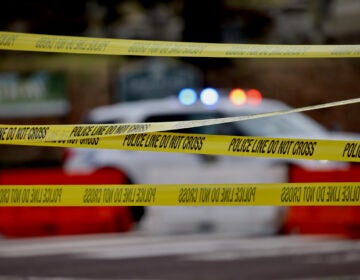Hope vs. fear: A 13-year-old’s experience at the March for Our Lives

Rissa Howard attended the March for Our Lives on March 24 with her father and sister. (Image courtesy of Annalise Howard)
“Tell me what democracy looks like,
THIS IS WHAT DEMOCRACY LOOKS LIKE!”
“Hey, hey!
Ho, ho!
The NRA has got to go!”
I marched with my younger sister and my dad in Philadelphia on March 24. Independence Hall and the Liberty Bell loomed in the background, symbols of the courage that our founding fathers needed, to stand against their unfair government. On that day, I felt that they symbolized the courage that the marchers have, to stand against violence, and our current government, even if it doesn’t always seem like they’re paying attention.
When I first heard about the shooting in Parkland, Florida, my first thought was, “Another one?” I’m ashamed that I couldn’t jump to compassion for the grieving families, the students, and the faculty and staff. Instead, I was becoming a part of the terrible reality that we are living in, where gun violence, whether through mass shootings like this one, or police brutality, or even just random shootings, are the norm.
The more my classes talked about it, and the more time that I got to process it, though, Parkland began to feel different from the other shootings I was used to hearing about. The students at Marjory Stoneman Douglas High School seem to be a lot like me and the students at my school.
My name is Rissa Howard. I’m 13 years old and in 8th grade. My school district is one of the top public school districts in the state, and even in the nation. I’ve also felt very safe at my school, but after the Parkland shooting, it felt like the little bubble I was living in got popped.
Some of my teachers started going over safety procedures, and what to do if a shooter came to our school. Doors that had always been left open began to get locked.
Everyone kept saying that Parkland was considered one of the safest neighborhoods in Florida, just like how my neighborhood is considered one of the safest neighborhoods in Pennsylvania. The more I thought about it, the more I realized that this kind of thing could happen anywhere — I just got lucky. I began to feel afraid; things felt out of my control. What can a 13-year-old do?
The march on March 24 was my second major protest (my first was a Black Lives Matter protest), but I still wasn’t very sure what to expect. When we got there, I was speechless. Thousands of people were all gathered in one place, and all with the same purpose: to do something about gun violence. What struck me the most, though, were all of the different types of people who showed up. There were a lot of high school and college students, of course. They were the super hype ones, starting all the chants, jumping up and down, and holding inspiring signs. I also saw a lot of teachers, who were protesting the idea of arming them in school. I was excited to see kids younger than myself at the march, who were just as involved as the adults. There were also older marchers holding signs. One read: “I’m marching for my grandchildren.” There were people carrying Black Lives Matter signs, LGBTQ flags, signs in Hebrew. There were people pushing newborn babies, playing guitars, banging on drums. And there were people like me, just walking and taking it all in. I marched, joined in a couple of chants, and began to gain some hope.
It felt amazing! We were turning our fear into action.
The moment I got home, I looked up “March for Our Lives” online. There were pictures of the hundreds of thousands of people marching in Washington, D.C., and videos of the brave survivors of the Parkland shooting sharing their stories: Emma González, David Hogg, Cameron Kasky, Mei-Ling Ho-Shing, and all of the other brave survivors. They definitely don’t have to be doing what they’re doing. But they didn’t let their fear drag them down. Instead they showed the world the right way to deal with fear — to overcome it with bravery.
I saw pictures of marches in Florida, Houston, Salt Lake City, Los Angeles, Baltimore. Then I scrolled down, and I saw pictures from marches all over the world. Australia, Brazil, France, Italy, Japan. People held signs calling America to action against gun violence, even though there is so much less gun violence in their own countries. I found more videos of students delivering inspiring speeches, and of a boy who was the only one in his school to do the walkout on march 14, but who bravely waited for the entire 17 minutes.
I wasn’t sure that I would’ve been brave enough to do a lot of the things that I saw others doing. It was inspiring to see these things, and it made me proud to have been a part of the worldwide march.
Courage can be found in many different forms. It might be speaking out against gun violence or the gun industry, even when you’re tempted to be like all of the others around you who aren’t. It might be making a sign to change someone’s mindset at a march. There are so many awesome things that you can do. The most important thing, though, is to keep going. Don’t just stop after one march. Even after the Parkland shooting, a lot of teens are still falling victim to gun violence, and losing their lives, from police brutality or more school shootings.
Stand up for what you believe in, even if it seems like no one is on your side. If there’s one thing we’ve learned from the #NeverAgain movement, it’s that it’s not always the “important” people who make the biggest changes. Sometimes, it could just be a group of teens who don’t want others their age to experience the horrors they have been through.
“We shall overcome, we shall overcome
We shall overcome someday;
Oh, deep in my heart, I do believe,
We shall overcome someday.”
—
Rissa Howard is a student at Bala Cynwyd Middle School.
WHYY is your source for fact-based, in-depth journalism and information. As a nonprofit organization, we rely on financial support from readers like you. Please give today.




